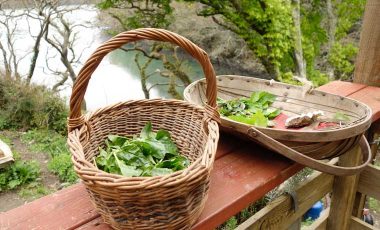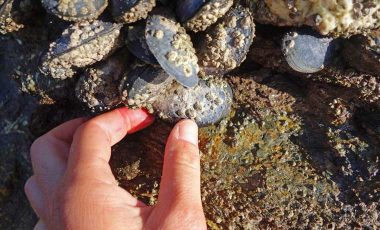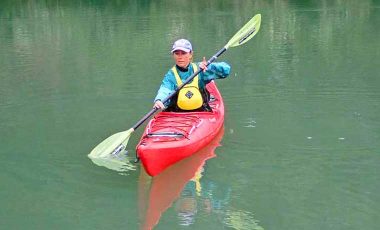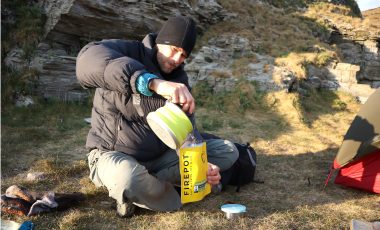I love the idea of foraging for food. Just thinking about cooking wild edible food picked straight from the hedgerow conjures feelings of wholesomeness and wellbeing. But then I start to really think about what it entails, and barriers galore immediately fall in my path. Surely being a proper forager takes far too much time and learning to find plants that are actually worth tucking into? And it’s just not worth risking it for a bit of free food, right?
Wrong. A day on a foraging course with the wonderful folk at 7th Rise put me straight. The course not only gave me a thorough foundation to build my foraging journey upon, but it also dispelled all the negative preconceptions that I had about foraging.
As it happens, foraging is easy, highly fascinating and really fun. It’s also very relaxing; you just can’t avoid slowing life right down. Plus, you’ll never look at the edges of a path, or the foliage in a wall in the same way again. Once you’ve got your eye in you’ll start to notice free and delicious food everywhere!
And so, as a result of my magical meanderings around the woods and seashore at 7th Rise, I am delighted to share with all you would-be foragers what I have learned. Then, hopefully you too can journey into the hedgerows and come back with more than just scratches and scrapes.
7 lessons on foraging, for beginners
As we slowly wandered down the muddy track towards the 300-year-old stone ‘Woodsmans’ cottage — 7th Rise HQ — the stress that had built up on my quest to catch the ferry to the Roseland peninsula on time totally dissipated. I was greeted by playful pups and a steaming enamel mug of nettle tea — freshly picked from next to the cottage, or course. Stinging weeds and hot water never tasted so good! We sat sipping it by the smoking fire that overlooked the lapping tide as it crept up the bay below.
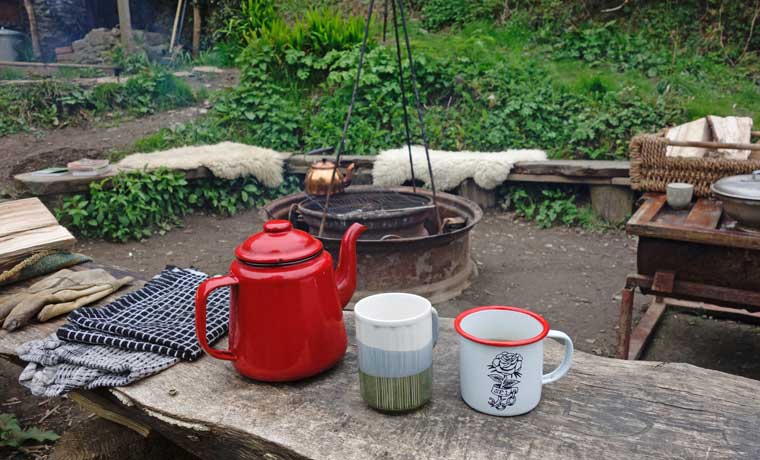
I knew right away that this was more than just a foraging course. This was time-travel. An outdoor classroom. A delight for the senses. A gentle lesson in mindfulness disguised as foraging course. It was an experience.
Here’s what I learned from my first experience as a beginner forager.
Lesson 1: Forage for fun, not survival
Unless you have many years of foraging experience and a wealth of knowledge, surviving solely on foraged food is pretty much impossible. Expecting to make full meals out of wild food (that are filling, nutritious and tasty) is a common mistake made by beginner foragers. In fact, this unmet expectation was one of the main barriers between me and foraging for a very long time.
Foraging is more about using and cooking what’s available to you, when you can. View the wild food you gather as just another seasonal ingredient that can be experimented with. Combine it with the normal food in your cupboards or in your camp cooking box to add depth, variety and nutrition.
Once you’ve altered your expectations on how to use foraged food, it’s likely that you’ll end up cooking with wild food more than you’d ever thought possible!
Lesson 2: Remember the poisonous ones
True, there are some poisonous plants out there that can make you very ill — at best — if eaten. However, the presence of these mean, green, killing machines shouldn’t put you off foraging. In fact, the best way to avoid picking the wrong plants is to make sure you know exactly what the baddies look, smell and feel like. That way, identifying the edible wild foods will be a stress-free and straightforward process.
Poisonous plants vary from country to country, and even region to region. So, before you head out foraging in your local area be sure to educate yourself on exactly which plants to avoid at all cost. Or, take a foraging course!
7th Rise highlighted one of the most poisonous plants to avoid if you are foraging in the UK:
Hemlock Water Dropwort
Also known as: Water Hemlock, Dead Mans Fingers, Dead Tongue
Found: near water, in damp areas and marshes
Identification: young plants can be mistaken for watercress and it can also be misidentified as flat leaved parsley, water parsnip or water celery.
More information: www.wildfooduk.com
Lesson 3: Consider environmental contamination
Before you go ploughing down a whole row of nettles for a cleansing morning brew, consider the precise location in which you are foraging. This helps to avoid serving up foraged food from potentially contaminated areas. Here’s a few things to think about:
- Are the plants on the edge of a well-used track where dogs (and humans) might like to relieve themselves?
Avoid these areas. Pick from higher up, or further away from the trail-side. - Are there any sewage outlets or drains running into the sea when foraging on the seashore or beach?
Avoid these areas. Take a walk further along the coast and you’ll be sure to find some delicious wild food in abundance. - Is the area where you are foraging right next to a busy road?
Avoid this area. Pollution from heavy traffic can contaminate the plants. Seek out quieter spots — it’s much more calming anyway! - Are you foraging for food on the edges of farmed crop fields?
Take care to thoroughly wash foraged food from areas where high pesticide use is likely.
Common sense comes into play quite a lot when considering environmental contamination, but it’s also easy to get excited by your finds regardless of how many dogs might have peed on them! So always wash thoroughly as a minimum precaution.
Lesson 4: Forage for plants that are easy to identify
Foraging for beginners can be somewhat daunting. Especially when certain plants can be easily confused with ones that aren’t necessarily that great to eat! So if you’re just starting out in the foraging world, make yourself familiar with just a couple of plants that are really easy to identify. Once you’re confident on those, you can move onto some of the less obvious plants.
I came away from my day at 7th Rise feeling super confident identifying these plants that were totally new to me (from an edible point of view), and now I see them everywhere!:
Wall Pennywort
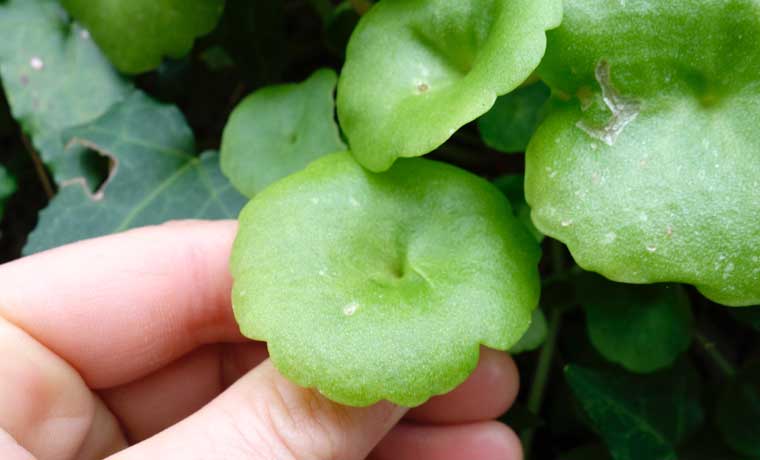 Also known as: Navel Wort
Also known as: Navel WortFound: in walls, woodland, hedgerows
Looks: like a belly button! Round with a central dimple.
Tastes: like bean sprouts — fresh, crunchy, moorish!
Uses in cooking: salads, stir frys, pestos, as a snack to munch on as you walk
Sea Spinach
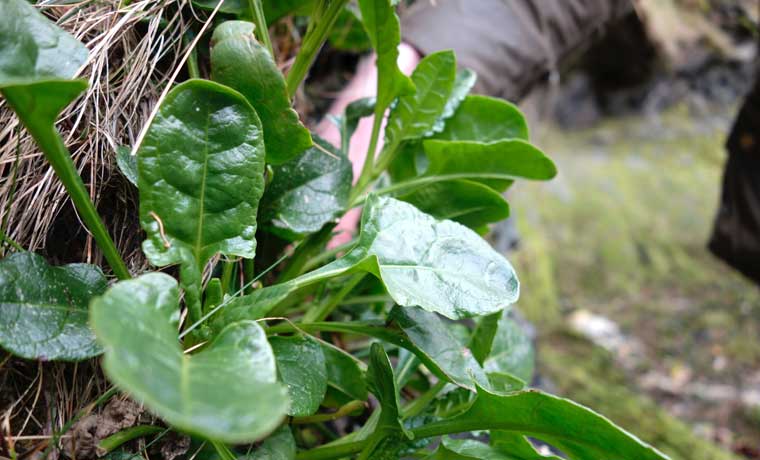 Also known as: Sea Beet
Also known as: Sea Beet
Found: close to the seashore
Looks: very like regular spinach but it is tougher and more waxy
Tastes: like spinach, but better (in my opinion!), a little salty
Uses in cooking: salads, stews, risotto, stir frys, pestos
Lesson 5: Choose plants that taste good!
As well as being easy to identify, 7th Rise recommends that beginner foragers focus their efforts on plants that taste good. And you’ll probably find that the two go hand in hand. Wall Pennywort is so delicious that I made darn sure I knew exactly what it looked like right from the start.
There’s no point gathering a whole load of bramble leaf buds (which certainly have an acquired taste!) if you just don’t like them. I know I won’t be leaping to get them on my plate any time soon.
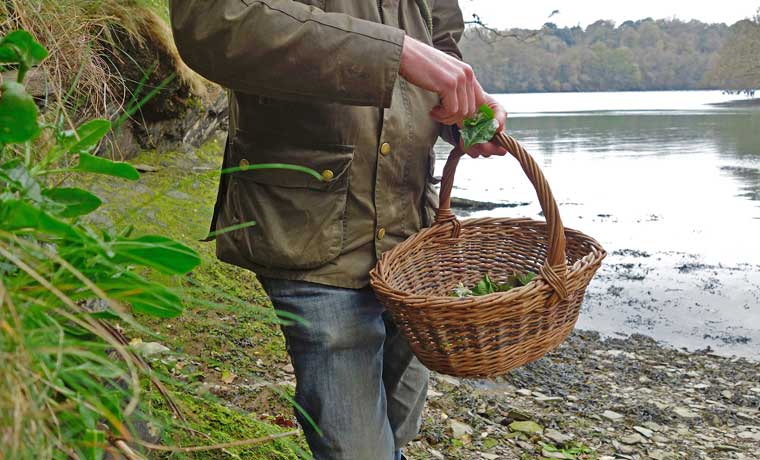
Lesson 6: Take your time
Foraging for food isn’t something that you can do in a rush. It’s one of the greatest things about the activity: you HAVE to take your time. And as a result, you’ll find yourself noticing all sorts of wonderful things in the grass beneath your feet. Things that you never knew were there before. You’ll also find yourself strolling, instead of stomping. You’ll hear the birds with more clarity, feel the breeze on your face. Notice what the clouds are doing… etc, etc.
But taking your time isn’t just good for the soul, it also helps you focus on the job in hand. It ensures that you’re not making incorrect identifications, and helps you choose only the best parts of the plants, rather than that just grabbing whatever’s there.
Lesson 7: If in doubt, don’t bother
The most simple lesson I learned on my day at 7th Rise, was that if you’re in any doubt about the plant you are about to eat, don’t eat it.
If in doubt, don’t bother
Remember, foraging for food isn’t about meal replacement, it’s about enhancing your diet with tasty and nutritious seasonal plants. You don’t NEED to eat it. So always be sure that you know exactly what the plant is before you consume it.
To help get better at eliminating the doubt, pick a small sample of the plant to take it home and study. Cross-reference it with images in books, read about what it should smell and feel like, or even ask an expert.
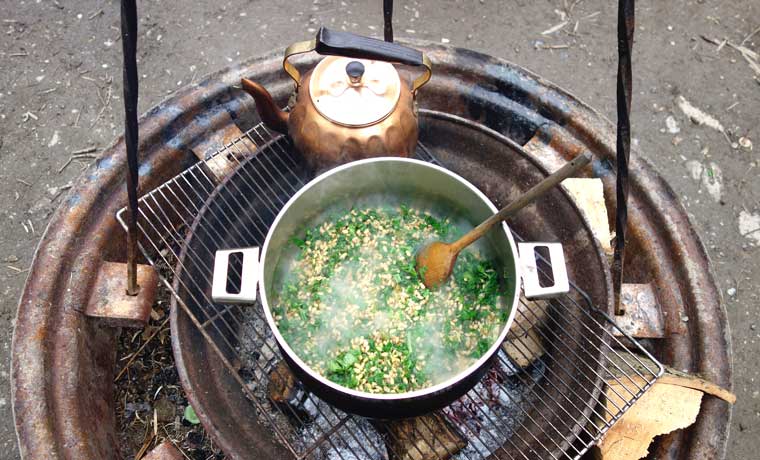
A foraged meal: pearl barley risotto with nettles, wild garlic, sea spinach, ground ivy and hairy bittercress
Thanks to Stuart Woodman — our foraging guide — for letting us sample his most delicious Woodman’s Wild Ale, and for a most magical day at 7th Rise.
For more information about foraging courses, venue hire, accommodation (you can stay in a treehouse!), and much more, check out 7th Rise.


